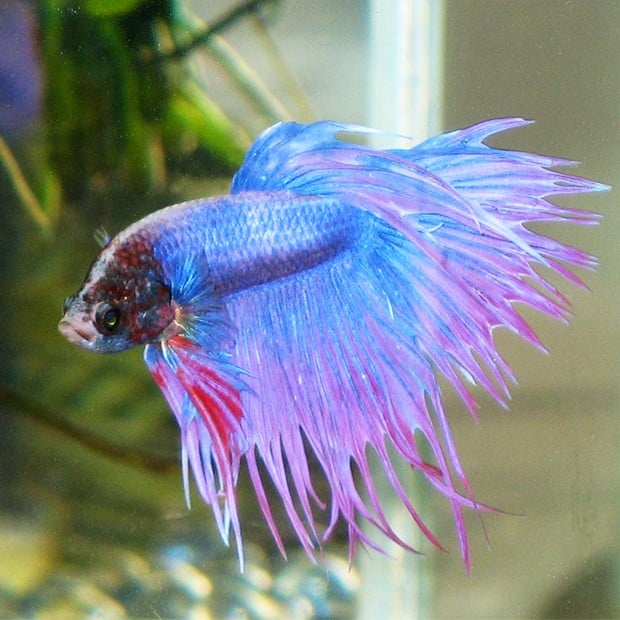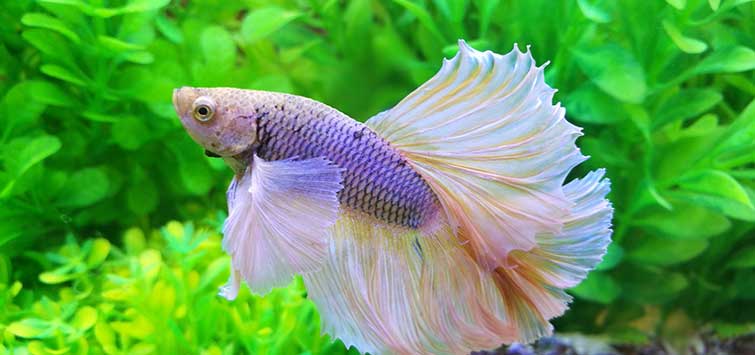All Concerning Betta Fish: Understanding Their One-of-a-kind Needs, Habits, and the Ideal Practices for Optimal Care
Understanding the distinct requirements and behaviors of Betta fish is important for any aquarist seeking to offer optimum care. These exciting creatures, native to the warm waters of Southeast Asia, show unique territorial tendencies and call for particular ecological problems to thrive. From choosing the right storage tank size to identifying potential health problems, different variables substantially affect their wellness. As we check out these elements better, the ramifications for both novice and knowledgeable fish caretakers become increasingly apparent, raising questions concerning how finest to suit these impressive fish in our homes.
Betta Fish Summary
Although usually appreciated for their lively colors and streaming fins, Betta fish, scientifically referred to as Betta splendens, are complicated creatures that require specific like grow. Stemming from Southeast Asia, these freshwater fish are known for their territorial nature and one-of-a-kind actions. Betta fish exhibit sexual dimorphism, with males showing a lot more dazzling shades and longer fins than females.
Their aggressive tendencies, particularly amongst males, require careful factor to consider when housing them. Bettas are commonly kept in single-specimen storage tanks to avoid territorial conflicts. They can coexist in harmony with particular compatible varieties in larger area storage tanks, offered the setting satisfies their requirements.

To make certain optimum treatment, aquarists have to recognize their unique behavior attributes, dietary demands, and habitat requirements. betta fish. With appropriate focus, Betta fish can exhibit their vivid individualities and thrive in a well-maintained aquarium setting
All-natural Environment and Setting
Betta fish grow in a varied range of all-natural environments, primarily found in the superficial waters of Southeast Asia, including rice paddies, swamps, and slow-moving streams. These atmospheres are characterized by cozy temperatures, usually between 75 ° F and 82 ° F(24 ° C and 28 ° C ), and a pH degree varying from 6.5 to 7.5, which is optimal for their health and wellness and well-being.
In their natural environments, Betta fish are accustomed to thick plant life, supplying both shelter and reproducing premises. The visibility of plants such as drifting water lilies and thick yards not just uses protection from predators however likewise contributes to the oxygenation of the water, which is vital for their respiratory needs. Additionally, these environments typically have locations of still water, permitting Betta fish to display their natural actions such as bubble nesting.
Recognizing the natural habitat of Betta fish is critical for aquarium lovers. Replicating these problems-- through water temperature level, pH balance, and the incorporation of live plants-- can significantly boost the general wellness and long life of these captivating fish, guaranteeing they thrive in a home fish tank setup.
Social Behavior and Interactions
Comprehending the social behavior and interactions of Betta fish is crucial for effective aquarium management. Betta fish, or Siamese visit this website fighting fish, are known for their unique behavior qualities, defined mostly by territoriality and aggression.
Alternatively, female Bettas exhibit less hostile actions and can exist side-by-side in teams, called sororities, if presented correctly. Nonetheless, it is essential to check their communications carefully, as power structure and supremacy can result in problems. Recognizing the dynamics within a Betta area is crucial; developing hiding areas and guaranteeing adequate room can mitigate aggression.
On top of that, Betta fish may also present inquisitiveness and social behaviors towards other species. While they can coexist with specific non-aggressive storage tank mates, it is necessary to select compatible varieties to avoid tension and aggression. Generally, identifying these social communications is essential to fostering a harmonious fish tank atmosphere for Betta fish.
Essential Care Standards
Supplying correct care for Betta fish is important to their health and health. To guarantee a growing atmosphere, it is necessary to keep optimum water conditions. The water temperature should be kept between 76 ° F and 82 ° F(24 ° C to 28 ° visit homepage C), while pH levels need to vary from 6.5 to 7.5. Normal water adjustments-- about 25% regular-- help maintain water high quality.
Betta fish require an appropriate tank size; a minimum of 5 gallons is suggested to supply ample space for swimming and hiding. Consist of decorations and plants to create a stimulating atmosphere, but avoid sharp objects that might harm their delicate fins.

Last but not least, make certain the storage tank is outfitted with a filter to keep the water clean, but use a gentle filter to prevent strong currents that can stress the fish. By adhering to these crucial treatment standards, owners can advertise a healthy and lively Betta fish.
Common Wellness Issues and Solutions
In the treatment of Betta fish, awareness of usual health problems is essential for keeping their wellness. One common concern is fin rot, usually brought on by bad water quality or bacterial infection. Signs and symptoms include frayed or blemished fins. To treat fin rot, improve water conditions and consider using a broad-spectrum antibiotic.
Another usual ailment is ich, a parasitical infection identified by white places on the fish's body (betta fish). Treatment includes enhancing water temperature and adding aquarium salt to the hop over to these guys container, as this can aid eliminate the parasite
Swim bladder disorder is likewise frequently observed, leading to buoyancy troubles. This condition may emerge from overfeeding or constipation. A fasting duration of 24-48 hours, adhered to by a diet plan of blanched peas, can provide relief.
Lastly, bettas may deal with velvet condition, indicated by a gold dust-like appearance on their skin. Therapy usually requires drug particularly designed for exterior bloodsuckers, along with enhanced storage tank hygiene.
Regular surveillance of water parameters, maintaining a tidy setting, and providing a balanced diet are critical safety nets. By resolving these health and wellness problems immediately, Betta fish can lead healthier, much more vibrant lives.
Verdict
In recap, successful betta fish care requires an understanding of their unique needs and behaviors. Giving an ideal setting, including ideal storage tank dimension and water problems, is necessary for their well-being. Additionally, acknowledging their territorial nature and guaranteeing adequate concealing spots can avoid hostility. Regular tracking of health and water quality, in addition to a well balanced diet plan, adds to the long life and vibrancy of betta fish. Abiding by these standards will foster a flourishing marine ecological community for these exciting animals.